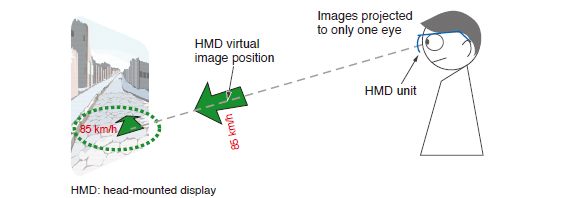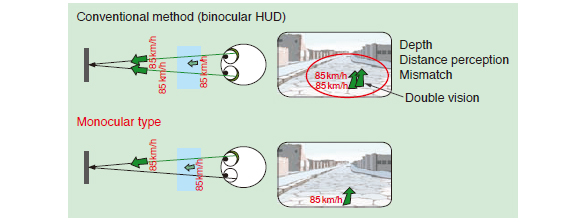- Back to the previous page
- AI Technology
Monocular Augmented Reality Display
The augmented reality display (ARD) can superimpose virtual information such as guidance information or virtual arrows for navigation on real backgrounds such as shops or roads.
Conventional ARDs have suffered from a double-vision problem in which two divided images are seen simultaneously, due to the differences in convergence between the real background and the virtual displayed images.
Toshiba has identified a new mechanism of vision recognition in which superimposed virtual images seen with monocular vision are recognized as being at the same depth as that of the real background images seen with binocular vision. Based on the new finding, we have solved the double-vision problem with a newly developed monocular head-up display (HUD) as a type of ARD that limits the scattering angle of the virtual images to the monocular viewing zone while the background is viewed by the eyes with binocular vision.
In addition, using motion parallax and perspective display technologies with head tracking, we have succeeded in free depth control of virtual displayed images at any real background position.

Monocular ARD

Principle of monocular HUD system


